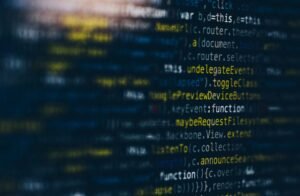Data Mining vs Data Profiling
Data mining and data profiling are two essential techniques in the field of data analysis. While they share similarities, they serve different purposes and are used at different stages of the data analysis process. This article aims to explain the key differences between data mining and data profiling and highlight their respective uses in extracting valuable insights from data.
Key Takeaways
- Data mining and data profiling are techniques used in data analysis.
- Data mining is the process of discovering patterns and relationships within large datasets.
- Data profiling involves examining and analyzing data to gain insights into its quality and structure.
- Data mining is primarily used for predictive analytics and pattern recognition.
- Data profiling is crucial for data cleaning, data integration, and data governance.
Data Mining
Data mining is a technique used to extract meaningful patterns and relationships from large datasets. It involves applying various algorithms and statistical methods to identify hidden insights in the data. **Data mining is often used for predictive analytics, allowing organizations to make informed decisions based on patterns and trends found in historical data.** It can be applied to various fields, including marketing, finance, healthcare, and more.
One interesting aspect of data mining is its ability to uncover valuable insights that may not be apparent at first glance. By analyzing large volumes of data, data mining algorithms can identify patterns and relationships that humans may overlook. *This can lead to groundbreaking discoveries and innovative solutions to complex problems.*
Data Profiling
Data profiling, on the other hand, is the process of examining and analyzing data to gain insights into its quality and structure. **By analyzing the content, structure, and relationships within a dataset, data profiling helps organizations understand the strengths and weaknesses of their data, ensuring its accuracy and reliability.** Data profiling is crucial for data cleaning, data integration, and data governance processes.
One interesting use of data profiling is in data cleansing. By identifying inconsistencies, errors, and missing values in the data, organizations can improve the quality and reliability of their datasets. *This ensures that accurate and reliable data is used for decision-making processes.*
Data Mining vs Data Profiling
| Aspect | Data Mining | Data Profiling |
|---|---|---|
| Objective | Discover patterns and relationships in large datasets | Examine and analyze data for quality and structure |
| Primary Use | Predictive analytics and pattern recognition | Data cleaning, data integration, and data governance |
| Techniques | Algorithms, statistical methods, machine learning | Statistical analysis, data profiling tools |
While both data mining and data profiling are valuable techniques in the field of data analysis, they have distinct purposes and applications. **Data mining focuses on discovering patterns and relationships within large datasets, often for predictive analytics and pattern recognition purposes.** On the other hand, data profiling examines and analyzes data to gain insights into its quality and structure, primarily to ensure the accuracy and reliability of the data.
Both data mining and data profiling are crucial for extracting valuable insights from data and making informed decisions. They complement each other in the data analysis process, with data profiling providing the foundation for data cleaning and preparation, and data mining uncovering hidden patterns and relationships that drive business value.
In Conclusion
Data mining and data profiling are essential techniques in the field of data analysis. They have distinct purposes and applications – with data mining focusing on discovering patterns and relationships within large datasets for predictive analytics, and data profiling examining and analyzing data to ensure its quality and structure. **Both techniques play a crucial role in extracting valuable insights from data and making informed decisions.** By leveraging the power of data mining and data profiling, organizations can unlock the true potential of their data and gain a competitive edge in today’s data-driven world.

Common Misconceptions
Data Mining vs Data Profiling
Data mining and data profiling are two terms often used interchangeably, but they are not synonymous. There are several common misconceptions surrounding the differences between these two concepts.
- Data mining is the process of extracting patterns or knowledge from a large dataset, whereas data profiling is the process of analyzing and understanding the various characteristics and quality of the dataset.
- Data mining involves complex algorithms and statistical techniques to discover hidden patterns or relationships in the data, while data profiling focuses on understanding the structure, content, and metadata of the data.
- Data mining is often used for predictive modeling, clustering, classification, or anomaly detection, while data profiling is primarily used to assess data quality, identify data inconsistencies, and gain insights into data patterns.
Misunderstanding the Goals
Another common misconception is that the goals of data mining and data profiling are the same. However, they have distinct objectives.
- The main goal of data mining is to uncover meaningful insights and patterns in the data that can be used for decision-making or prediction.
- The main goal of data profiling, on the other hand, is to assess data quality, understand data patterns, and identify data issues or inconsistencies that need to be addressed.
- Data mining aims to discover new knowledge or information from the data, while data profiling aims to provide a comprehensive understanding of the dataset for further analysis or improvement.
Underestimating the Complexity
Some people mistakenly believe that data mining and data profiling are straightforward processes that can be easily accomplished.
- Data mining requires advanced statistical and analytical techniques, including machine learning algorithms, to extract valuable insights from the data. It involves preprocessing, transformation, pattern discovery, and model evaluation.
- Data profiling involves analyzing and assessing various aspects of the data, including its structure, metadata, completeness, consistency, and uniqueness. It requires a deep understanding of the dataset and the ability to identify relationships and patterns that may impact data quality.
- Both data mining and data profiling are complex tasks that require expertise in data analysis and interpretation to derive meaningful and actionable insights from the data.
Overemphasizing the Tools
Another misconception is that data mining and data profiling are heavily reliant on specific tools or software.
- Data mining techniques can be implemented using various tools and programming languages like Python, R, or SAS, but the choice of tool does not determine the success or effectiveness of the data mining process.
- Data profiling can also be performed using different tools or software, depending on the specific requirements and the complexity of the dataset. However, the focus should be on understanding the data and assessing its quality, rather than solely relying on a particular tool.
- While tools can assist in data mining and data profiling tasks, it is essential to have a solid understanding of the underlying concepts and techniques to extract meaningful insights from the data.

Data Mining vs Data Profiling
Data mining and data profiling are two important techniques in the field of data analysis. While data mining focuses on extracting hidden patterns and trends in large datasets, data profiling aims to understand the structure, quality, and content of the data. In this article, we will explore the differences between these two techniques and their respective applications.
Customer Segmentation
In this table, we compare the use of data mining and data profiling in customer segmentation. Data mining techniques such as clustering algorithms are applied to identify distinct customer groups based on their purchasing behavior, demographics, and preferences. On the other hand, data profiling allows analysts to understand the distribution of customer attributes such as age, income, and geographical location, providing insights into the target market.
| Data Mining | Data Profiling |
|---|---|
| Identifies customer segments based on patterns | Provides descriptive statistics about customer attributes |
| Enables targeted marketing strategies | Helps in understanding the composition of the market |
Fraud Detection
Table illustrating the differences between using data mining and data profiling for fraud detection. Data mining techniques can identify anomalous patterns in transaction data, automatically flagging potentially fraudulent activities. On the other hand, data profiling helps in understanding the distribution of normal transaction patterns, allowing analysts to define threshold values for detecting outliers.
| Data Mining | Data Profiling |
|---|---|
| Detects unusual patterns in transaction data | Defines normal transaction patterns |
| Automates fraud detection process | Assists in setting threshold values for anomaly detection |
Product Recommendation
This table compares the use of data mining and data profiling in product recommendation systems. Data mining algorithms, such as collaborative filtering, analyze user behavior to recommend items based on user preferences and similarities. On the other hand, data profiling provides information about the historical purchase patterns of customers, helping in generating personalized recommendations.
| Data Mining | Data Profiling |
|---|---|
| Recommends items based on user behavior | Provides insights into historical purchase patterns |
| Enables personalized recommendations | Assists in understanding customer preferences |
Healthcare Analysis
In the realm of healthcare analysis, data mining and data profiling have different applications. Data mining techniques can be used to analyze medical records and identify associations between symptoms, diseases, and treatments. Data profiling, on the other hand, helps in understanding the completeness and accuracy of healthcare data, ensuring reliable analysis.
| Data Mining | Data Profiling |
|---|---|
| Identifies associations between medical conditions | Verifies the completeness and accuracy of healthcare data |
| Aids in medical research and diagnosis | Ensures reliable analysis and decision-making |
Financial Forecasting
In this table, we explore the use of data mining and data profiling in financial forecasting. Data mining algorithms can analyze historical financial data to predict trends, detect anomalies, and make forecasts for stocks, currencies, or other financial instruments. Data profiling helps in assessing the quality of financial data, identifying missing values, outliers, or inconsistencies that may impact the accuracy of forecasts.
| Data Mining | Data Profiling |
|---|---|
| Provides financial trend analysis and predictions | Assesses the quality and consistency of financial data |
| Aids in making informed financial decisions | Ensures accurate and reliable financial forecasts |
Social Media Analysis
This table compares the applications of data mining and data profiling in social media analysis. Data mining techniques can explore user-generated content, sentiments, and interactions to extract valuable insights for businesses such as sentiment analysis and trend identification. Data profiling ensures the integrity and quality of social media data, allowing reliable analysis of user behavior and preferences.
| Data Mining | Data Profiling |
|---|---|
| Extracts valuable insights from social media data | Ensures the integrity and quality of social media data |
| Enables sentiment analysis and trend identification | Provides insights into user behavior and preferences |
Inventory Management
Table illustrating how data mining and data profiling techniques are applied in inventory management. Data mining algorithms analyze historical sales data, inventory levels, and other factors to optimize inventory stocking strategies and improve supply chain efficiency. Data profiling helps in identifying data inconsistencies, such as missing values or incorrect entries, ensuring the accuracy and reliability of inventory records.
| Data Mining | Data Profiling |
|---|---|
| Optimizes inventory stocking strategies | Identifies data inconsistencies in inventory records |
| Improves supply chain efficiency | Ensures accurate and reliable inventory management |
Predictive Maintenance
In the context of predictive maintenance, data mining and data profiling have different roles. Data mining techniques can analyze sensor data, maintenance records, and other variables to predict equipment failures, schedule maintenance, and optimize resource allocation. Data profiling helps in assessing data quality, ensuring that sensor data is complete, consistent, and accurate for reliable predictive modeling.
| Data Mining | Data Profiling |
|---|---|
| Predicts equipment failures and optimizes maintenance | Assesses the quality of sensor data for reliable analysis |
| Improves maintenance scheduling and resource allocation | Ensures accurate and reliable predictive modeling |
Market Basket Analysis
This table compares the use of data mining and data profiling in market basket analysis. Data mining algorithms can explore transactional data to discover associations between products frequently purchased together, enabling businesses to optimize product placement and cross-selling strategies. Data profiling helps in understanding the coverage and quality of transaction data, ensuring reliable analysis of purchasing patterns.
| Data Mining | Data Profiling |
|---|---|
| Discovers associations between frequently purchased products | Assesses the coverage and quality of transaction data |
| Optimizes product placement and cross-selling strategies | Ensures reliable analysis of purchasing patterns |
Conclusion
Data mining and data profiling are valuable techniques in the field of data analysis. While data mining extracts hidden patterns and trends, data profiling focuses on understanding the structure and quality of data. Both techniques have distinct applications in various domains, including customer segmentation, fraud detection, healthcare analysis, financial forecasting, social media analysis, inventory management, predictive maintenance, and market basket analysis. By leveraging the strengths of these techniques, organizations can gain valuable insights, make informed decisions, and improve their overall performance.
Data Mining vs Data Profiling – Frequently Asked Questions
1. What is the difference between data mining and data profiling?
Data mining is the process of extracting useful information and patterns from large datasets, allowing organizations to make informed decisions. On the other hand, data profiling is the process of analyzing data to understand its quality, consistency, and overall structure.
2. How are data mining and data profiling used in businesses?
Data mining is used by businesses to uncover hidden patterns and trends in the data, which can help in understanding customer behavior, optimizing marketing strategies, and improving operations. Data profiling, on the other hand, helps businesses ensure data quality and identify any inconsistencies or errors within their datasets.
3. What are the main goals of data mining?
The main goals of data mining include discovering patterns and relationships in data, predicting future outcomes, and providing actionable insights for decision-making. It aims to extract valuable knowledge from large datasets that would otherwise be difficult to uncover using traditional methods.
4. What are the main goals of data profiling?
The main goals of data profiling include identifying data quality issues, understanding the structure of the data, and ensuring data consistency. It helps in gaining a comprehensive understanding of the data in order to support data-driven decision-making and improve data management processes.
5. What techniques are used in data mining?
Data mining techniques include statistical analysis, machine learning algorithms, association rule mining, clustering, and classification. These techniques help in uncovering patterns, correlations, and trends in the data, allowing organizations to make accurate predictions and take proactive actions.
6. What techniques are used in data profiling?
Data profiling techniques involve examining the data to identify data types, identifying missing values, and assessing data distribution and uniqueness. It also includes checking for data integrity constraints, data quality rules, and data consistency. Profiling techniques may vary based on the specific requirements and characteristics of the dataset.
7. How do data mining and data profiling relate to each other?
Data mining and data profiling are both essential steps in the data analysis process. While data mining focuses on extracting valuable insights and patterns from data, data profiling ensures that the data is of high quality and suitable for analysis. Data profiling helps in preparing the data for data mining by identifying any issues or anomalies that may affect the accuracy of the analysis.
8. Which one should I prioritize, data mining or data profiling?
Both data mining and data profiling play crucial roles in the data analysis process. Prioritizing one over the other depends on the specific goals and needs of your business. If the data is of poor quality or contains inconsistencies, data profiling should be prioritized to ensure accurate and reliable results. If the data is of good quality, data mining can be given more focus to uncover valuable insights and patterns.
9. Can I use data mining and data profiling together?
Absolutely! Data mining and data profiling complement each other in the data analysis process. Data profiling helps in preparing the data for data mining by identifying data quality issues, while data mining takes advantage of the cleansed data to extract valuable insights. Using them together can lead to more accurate and meaningful results.
10. Is data mining and data profiling only for large organizations?
No, data mining and data profiling are beneficial for organizations of all sizes. Regardless of the scale, businesses can derive value by uncovering patterns and insights from their data through data mining. Similarly, data profiling is necessary to ensure data quality and consistency, which is important for decision-making, regardless of the organization size.




